Interns Explore Autonomous Vehicle Impact
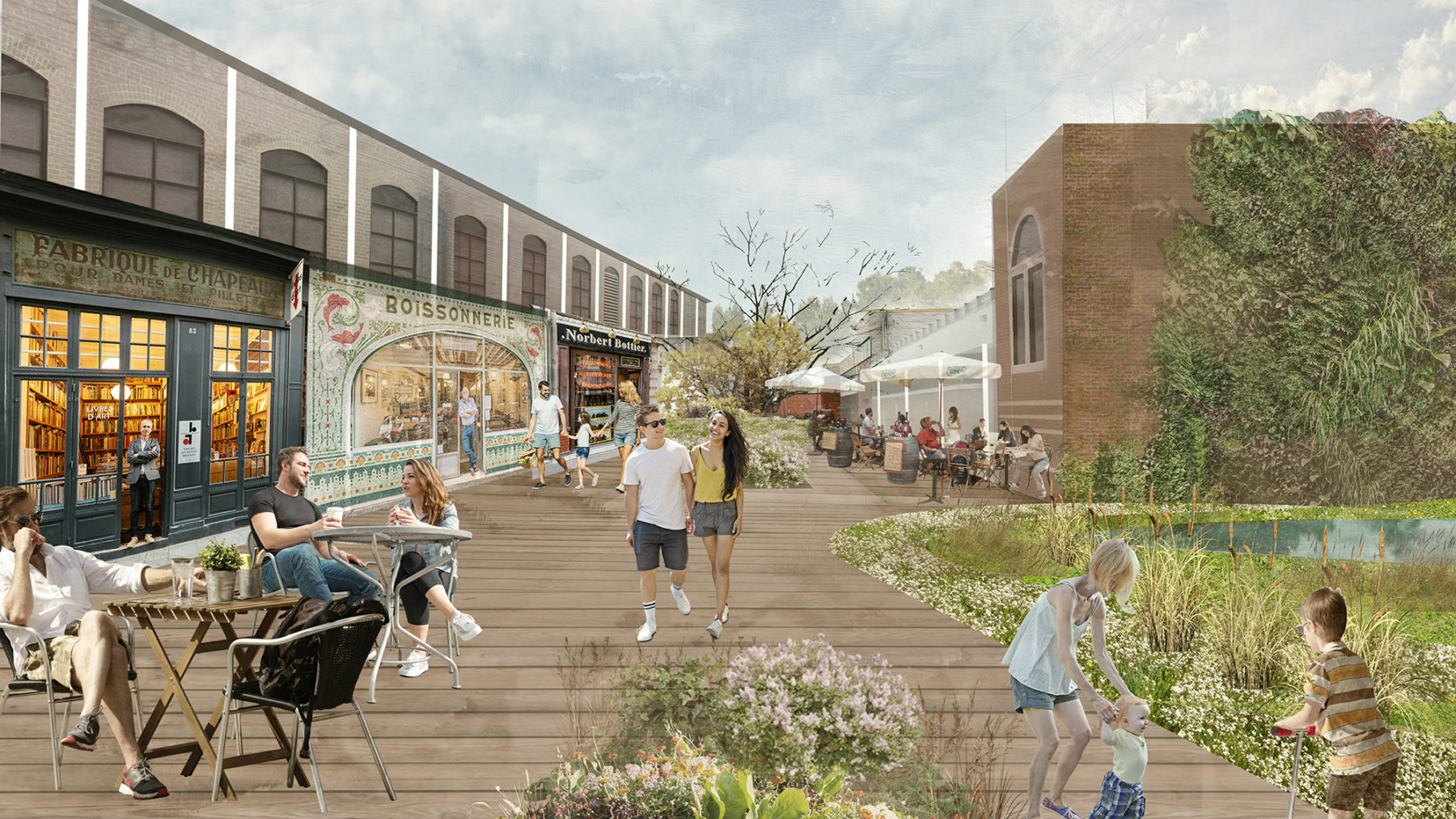
 Sasaki
Sasaki

This post is an in-depth look at this year’s summer intern design charrette, “Shifting Gears.” To learn more about this year’s intern class, click here.
Every summer, Sasaki kicks off its internship program with a two-week design charrette. During this exercise, a diverse intern cohort of urban designers, architects, civil engineers, and marketers works together to tackle a real-world design challenge.
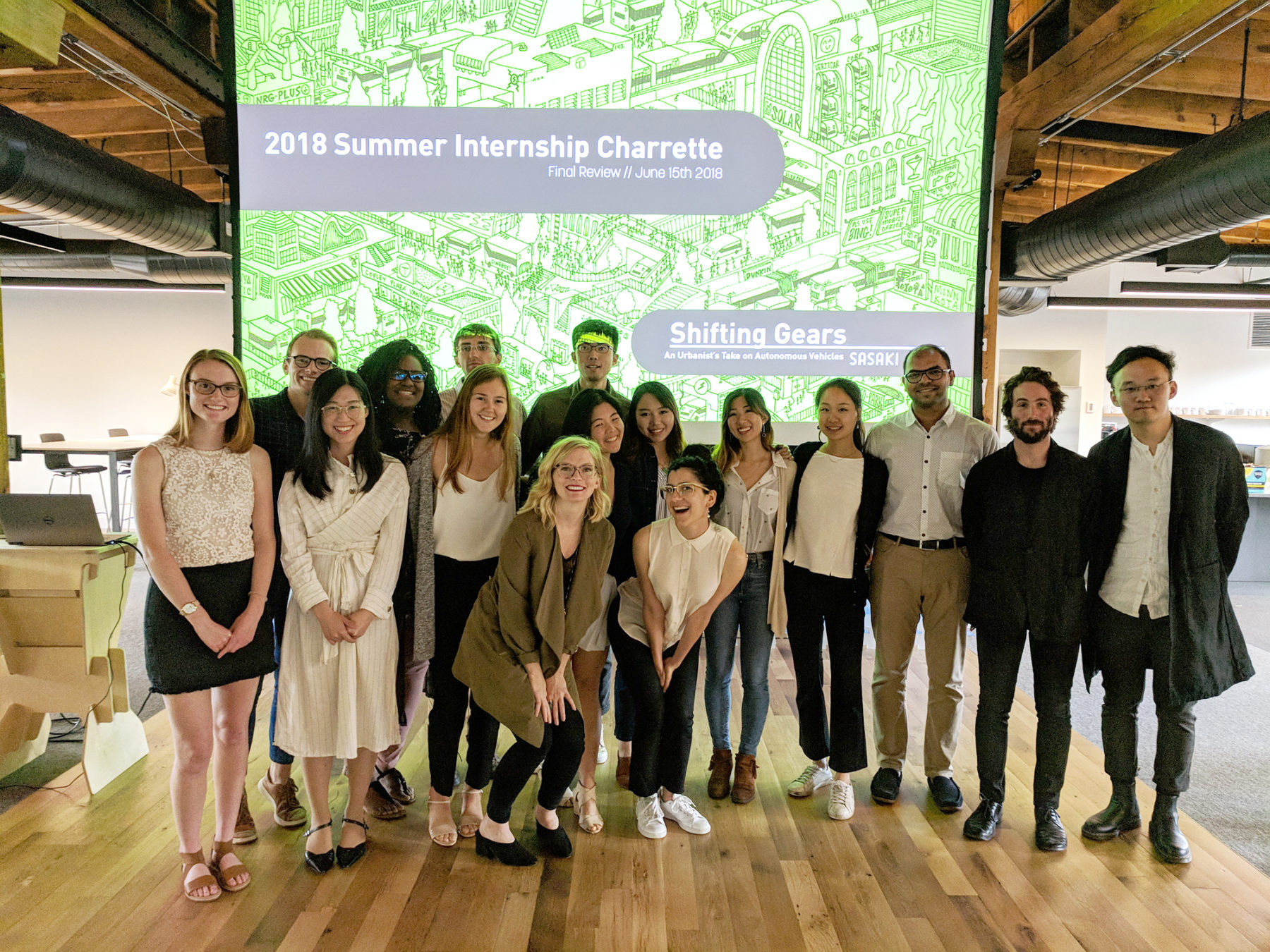
This year, we invited the interns to take on the most ambitious and futuristic charrette yet. The interns collaborated to imagine a future in which autonomous vehicles (AVs) have completely replaced the standard car. We asked the interns to create a comprehensive plan and design for the city of Somerville, MA that examined the potential role of AVs in this area, and to use their creativity to imagine the transformative impacts of AVs on city planning and streetscapes in the future.
“The charrette is a great way to intertwine the disciplines,” said Alykhan Mohamed, coordinator of this year’s internship charrette. “We believe it’s an immersive way to get people out of their comfort zones. It gives the interns the opportunity to delve right into the Sasaki approach to design, which at its core fosters and values interdisciplinary thinking.”
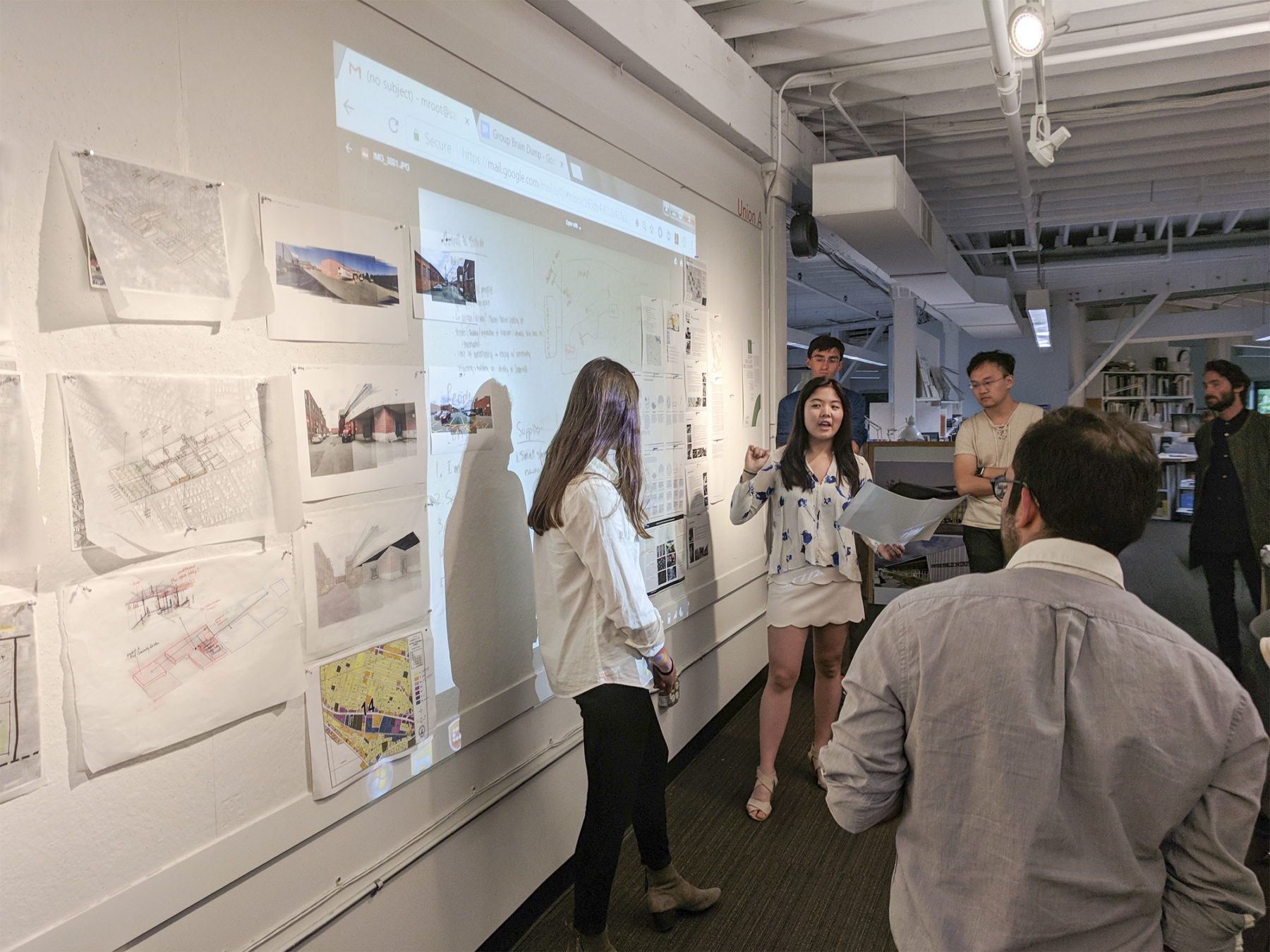
As they began to conduct research, the interns focused their efforts on two major drivers:
First, the interns adopted a mantra of “human-centric” thinking. Today, cities are planned around cars—catering to the needs of roads, highways, and parking. However, the interns worked within the premise that AVs create the opportunity to transform both this mindset and our physical environment. City-planning has the potential to become “human-centric,” with people as the focal point—creating a future where fleets of AVs are designed to take up less space and serve the needs of the people living in the city.
Second, the interns strove to uphold Somerville’s spirit of inclusion and diversity in their design. While conducting the site visit, the interns not only spoke with local government officials, but also chatted with Somerville residents in order to gain a first-hand sense of the community.
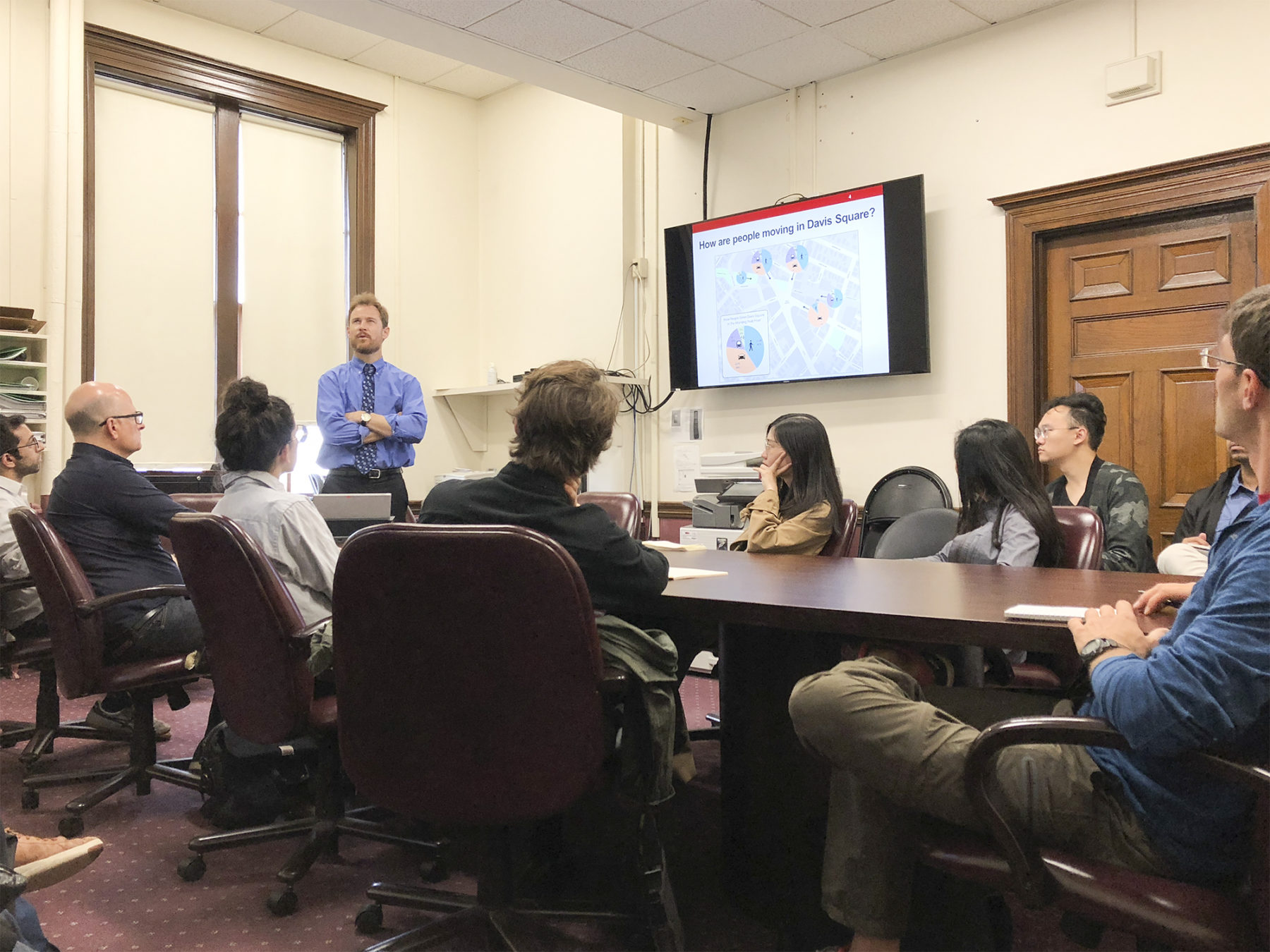
Interns and charrette coordinators visit Somerville’s City Hall to learn about the city’s existing planning initiatives
With these broad goals in mind, the team delved into developing concepts. They ultimately created a final presentation that envisioned the future of Somerville on three different scales: Strategic Planning, Urban Spaces, and Streets of the Future.
What pitfalls could lie in an AV future for Somerville, and how might these be avoided?
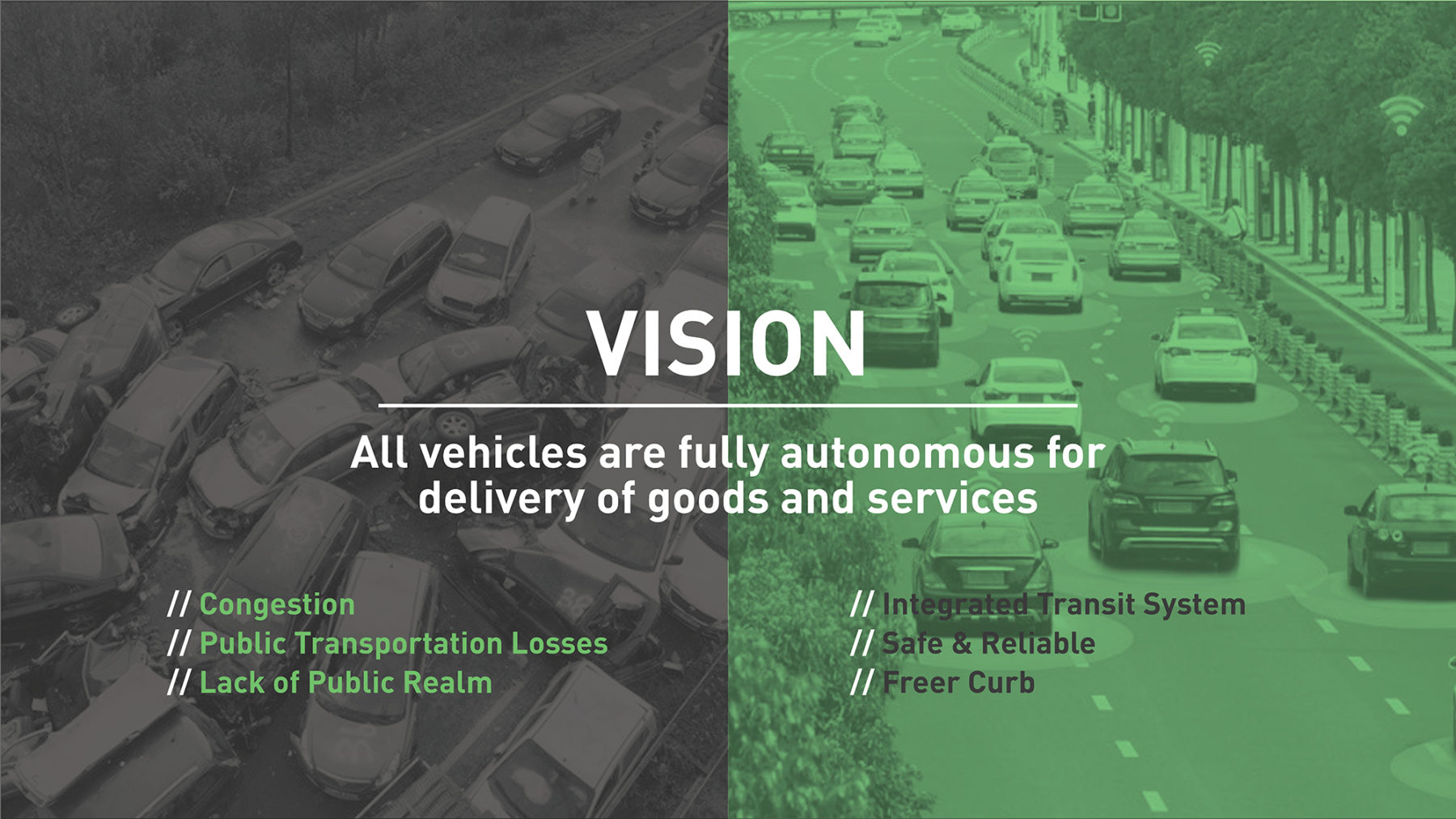
The Strategic Planning team depicted the future of AVs in the future through a series of “heaven or hell” scenarios, laying out the potential consequences of AVs (left) and the potential benefits of AVs with proactive planning (right)
The Strategic Planning team focused on the effects of AVs on a city-wide scale, and laid the foundation for the charrette as a whole. The team outlined its vision for AVs in the future, and the potential consequences if this vision is not adopted. In this way, the team established the baseline assumptions about the status of AVs in the future, which served as a guideline for all the groups in the charrette.
The guiding assumptions were as follows: all vehicles on the road will be fully autonomous; these vehicles will be publicly owned and managed as fleets; and AVs will be centrally stored and maintained, significantly reducing the need for parking.
Based on this overarching vision for AVs in the future, the team created a city-wide policy toolkit that would allow Somerville to increase its efficiency, equity, and accessibility. This toolkit recommended policies such as subsidized rides to encourage mobility from poorly-connected areas, and land-conversion incentives to financially motivate landowners to convert property formerly used for automobiles into new areas with ecological and community benefits.
What is the potential for formerly automobile-oriented space?
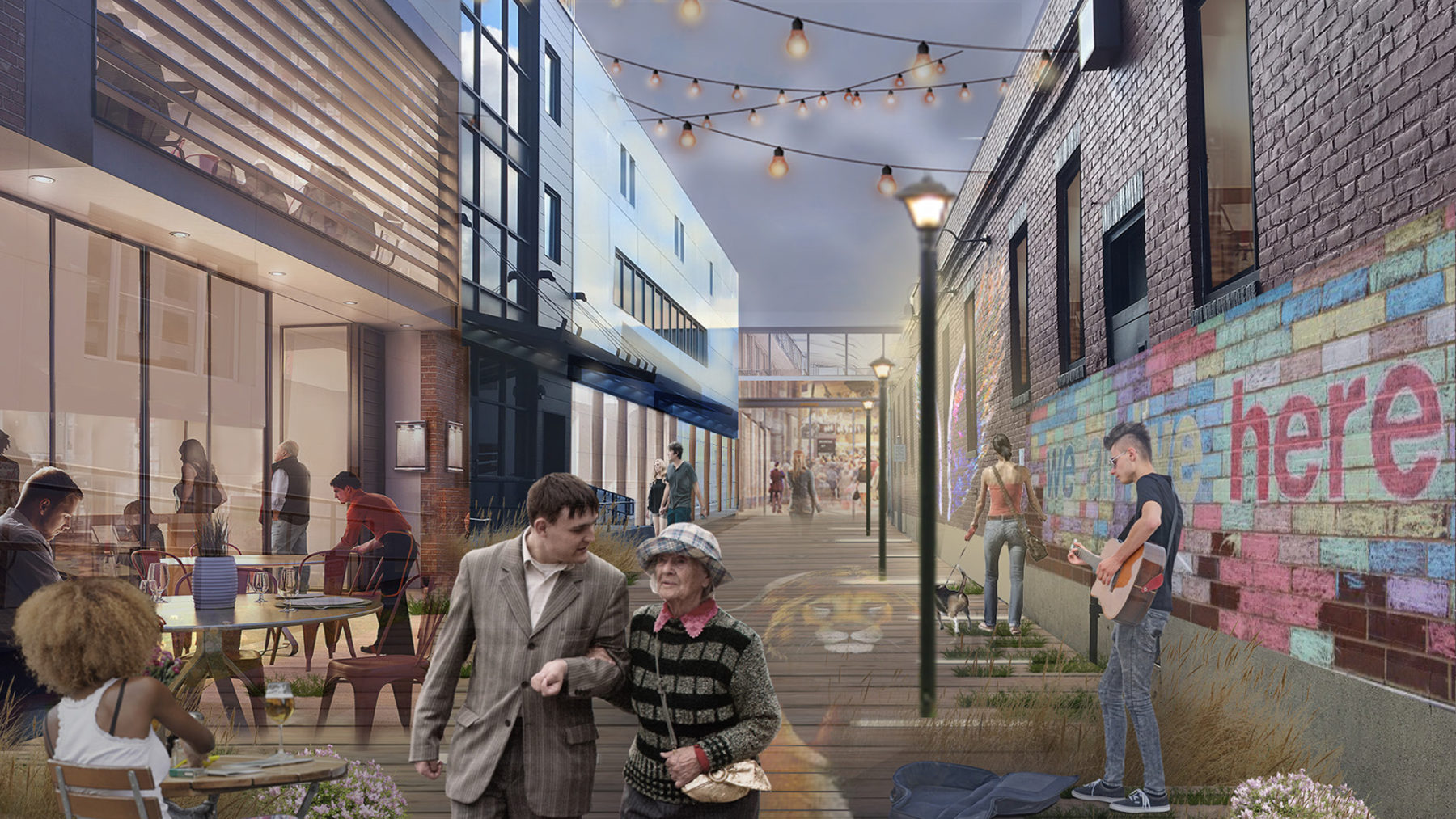
Rendering of a dead-end alley transformed into a community space for arts and business storefronts
While the previous group looked at the city as a whole, the Urban Spaces team focused on re-imagining large spaces that are currently taken up by traditional cars—such as parking lots and garages—and transforming these places into centers for community-gathering and greenspace.
Their goals? The team aimed to introduce new green space, create centers for public gathering, and connect key landmarks in Somerville with interstitial corridors and alleys. To achieve this goal, they envisioned three main structural concepts: the hub, which includes large spaces such as a grocery parking lot; the interstitial, which includes medium-sized spaces such as the garages behind residents’ homes that will no longer be in use; and lastly the spine, which refers to the redesign of alleyways and unused corridors to encourage walking between the aforementioned larger spaces.
One particularly inventive concept was the re-imagination of the parking lot of Market Basket, a grocery store that has become a community hub for Somerville. The re-imagination of the traditional parking lot included innovative aspects such as the ability to transform during different seasons—featuring a green picnic area during warm weather, and converting into an ice skating rink in the winter.
How can AVs enable streets to become more accessible, sustainable, and community-oriented?
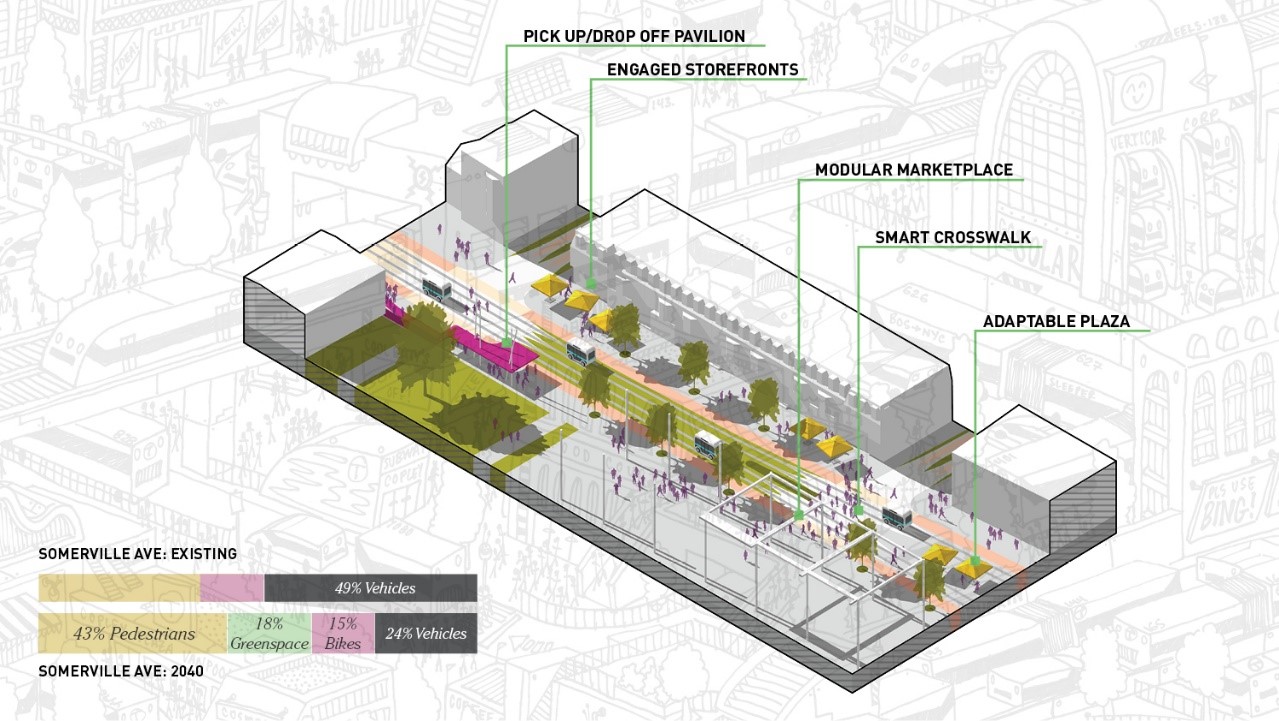
A transformed streetscape that features larger sidewalks, a smart crosswalk, and an adaptable plaza
The Streets of the Future team zoomed in on the streetscapes of Somerville Avenue, discovering the ways that the use of AVs can reduce the amount of space that roads take up. Accordingly, the interns were able to augment the sidewalk for safety and recreation in their utopian plans Somerville in the future, while also replacing sections of the road with green space and community gardens.
The team also pinpointed opportunities for creative, “smart” furnishing for the street, such as “adaptive seating” that can retract into the ground and “smart lamp posts” with solar panels to collect energy during daylight hours. Overall, these designs would allow Somerville to become more walkable, community-oriented, and environmentally friendly.
The charrette won glowing feedback from the critics in the audience. “This was a great example of what Sasaki as a firm is all about,” one critic said. “There was presentational clarity layered with personalization and storytelling. It made this whole project very meaningful.”
Mohamed added, “My hope was to have everyone come in with the manpower and talent to take on the next step of our research, but also with some fresh thinking. I think we definitely got both of those.”
This project built on previous research by Mohamed and other Sasaki designers who studied the implications of autonomous vehicles on urbanism and mobility. The concepts from the charrette will be integrated into the microsite that Mohamed and his team are creating for their research on AVs.